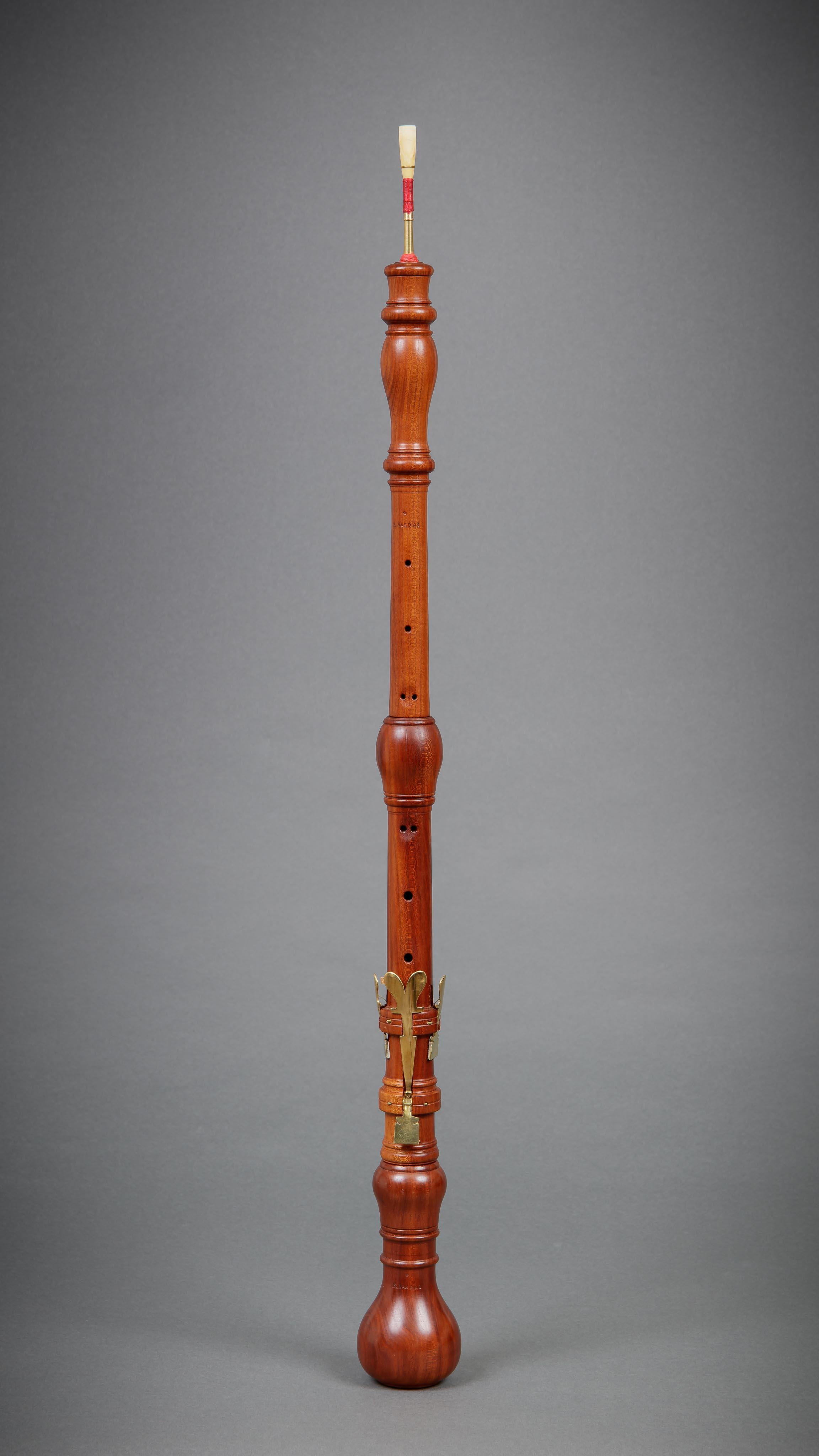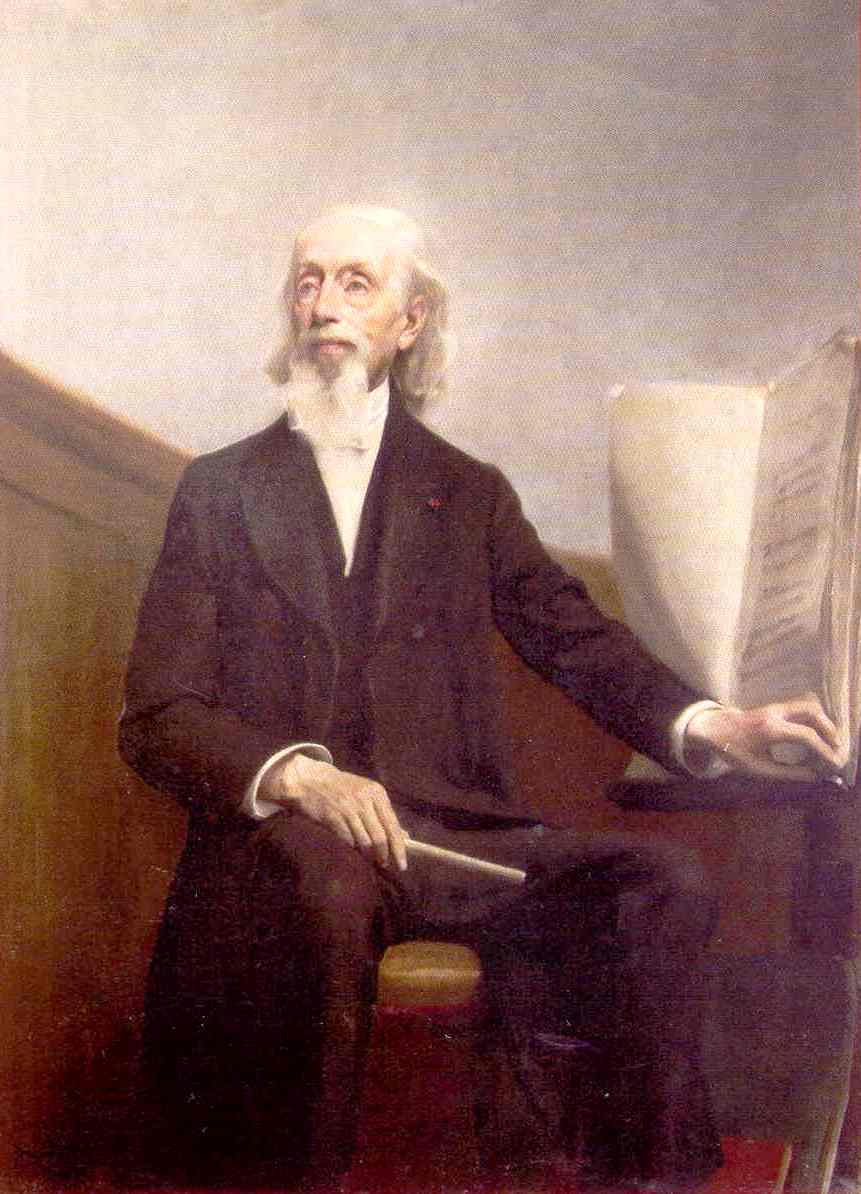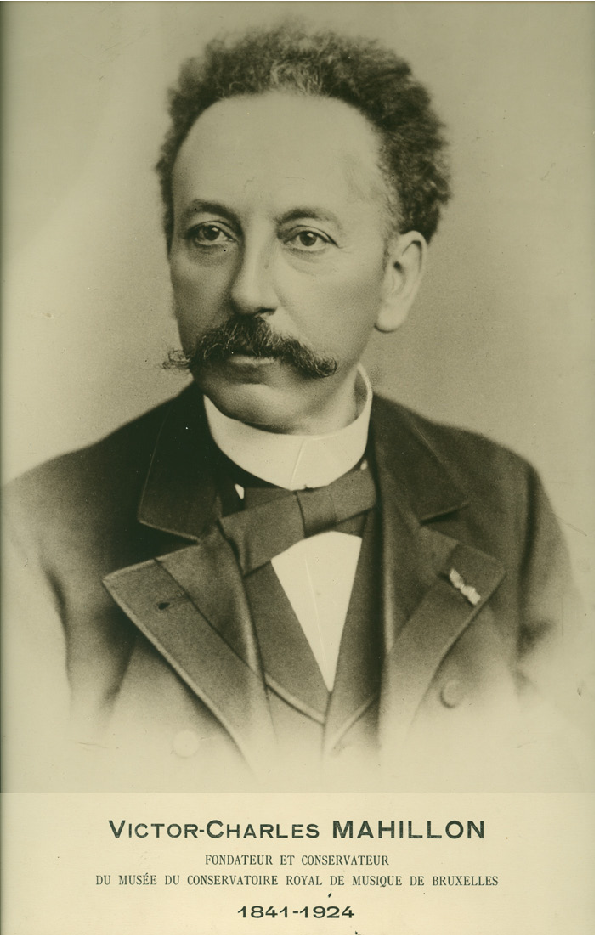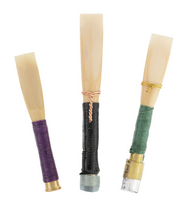A Brief History Of The Lower Oboes: Chapter One, Oboe d'Amore
Posted by Clair Cangialosi, DMA on Sep 22nd 2025
Table of Contents:
- Introduction and the 18th Century
- Use in the Music of J.S. Bach
- 19th Century Revival
- Modern Usage
- Conclusion
- End Notes
Introduction and the Eighteenth Century
The oboe d’amore is the alto voice of the oboe family, pitched in A. It is larger than the oboe, and typically has a bulb-shaped bell and slightly curved bocal, similar to that of the English horn. Oboe d’amore, translated from Italian, means “oboe of love,” so called because of its soft and sweet tone quality. (1)

By the early 18th century, oboe family instruments had spread throughout Europe, with the oboe d’amore taking strong root in south-central Germany. The most famous maker of these instruments was Johann Heinrich Eichentopf of Leipzig (1678-1769), with the earliest surviving instrument dated around 1717. Similarly to the oboe at this time, the oboe d'amore only had two or three keys, depending on the maker. (2)

Usage in the Music of J.S. Bach
As it would happen, Leipzig was also home to the oboe d’amore- adoring Johann Sebastian Bach from 1723 until his death in 1750. He wrote extensively for the instrument (or more often, a pair) in his orchestral and choral works. (3)
One particularly beautiful obligato part for two oboes d’amore is in the Et in Spiritum Sanctum movement of the Mass in B Minor. The video below features a trio of baroque double reeds accompanying a bass voice soloist, starting at 1:12:57. (4)
Another example of Bach’s use of the oboe d’amore is the Concerto in A Major, BWV 1055, performed here on a modern instrument by Peggy Pearson and the Winsor Music Ensemble. (5)
Nineteenth Century Revival
Despite its high baroque heyday, the oboe d’amore began to fall out of popularity and had mostly disappeared by 1800. The instrument was basically unheard of in the 19th century until a resurgence of J.S. Bach’s music and new interest in historical performance spurred on its revival.
This resurgence was led, in part, by musicologist and conductor François-Auguste Gevaert (figure 3, right), who became head of the Royal Conservatory in Brussels in 1871. As an early music scholar, he had previously created new editions of several of Bach's works using only the instruments he had available. This became problematic because the oboe d’amore parts had to be split between oboe and English horn in order to comfortably cover the full range from written B 3 to G-flat 6. (6)
Gavaert was intent on performing Bach’s music as it was originally scored, so he enlisted Belgian instrument maker, Victor-Charles Mahillon (figure 4, right), to produce oboes d’amore with “modernized” keywork. Mahillon's oboe d'amore, first completed around 1874, was based on the 10-key Triebert system which was standard in France at that time. This instrument would become the prototype for the modern oboe d’amore. (7) One of these instruments is still held in the colletion at the Brussels Musical Instrument Museum!
Mahillon debuted his oboe d’amore (Figure 5, below) at the 1878 Paris World Fair, which helped the instrument gain popularity across Europe and the United States. Other instrument companies continued to refine the keywork and tonehole design in the following decades. Notably, Loreé adapted the full conservatoire system for the oboe d’amore in 1906. (8)



Modern Usage
Although primarily used for historical performances of Bach’s music, the oboe d’amore did find its way into 20th century orchestral repertoire. There is also a growing repertoire of originally composed chamber and solo repertoire featuring the instrument- below are just a few examples.
Richard Strauss, Symphonia Domestica, 1903 (solo starts around 04:16)
Claude Debussy, Images for Orchestra, movement 1: Gigues, 1909-12 (solo starts at 0:43)
Robert K. Mueller, Her Voice, Duo for Oboe D’amore and Piano, 2019
Conclusion
The oboe d’abore, with its beguiling tone quality, has captured the ears and hearts of many a performer and concert-goer over the last three centuries. Whether you’re an early music enthusiast, or just looking to try something new, we’ve got all the reeds, cane, and tools you need to become an oboe d’amore aficionado.
Questions? Contact us through our website- we're happy to help!
Go to Intro
Go to Chapter 2
Go to Chapter 3
End Notes
- Finkelman, Michael. “Oboe, III. Larger and Smaller European Oboes, 3. Mezzo-soprano oboes, (ii.) Oboe D’amore” Grove Music Online. 2001. https://doi-org.suproxy.idm.oclc.org/10.1093/gmo/9781561592630.article.40450
- Finkelman, Michael. “The Lower Oboes: Genesis and Development,The Mezzo-Soprano Oboes.” unpublished manuscript, 2022, typescript, 4
- Finkelman, Michael. “The Lower Oboes: Genesis and Development,The Mezzo-Soprano Oboes.” unpublished manuscript, 2022, typescript, 5.
- Bach, Johann Sebastian. “Et in Spiritum Sanctum” in Mass in B Minor, BWV 232. Performed by The Netherlands Bach Society. January 22, 2019. Youtube, 1:12:57. https://www.youtube.com/watch?v=3FLbiDrn8IE
- Bach, Johann Sebastian. Concerto for Oboe D’amore in A Major BVW 1055. Performed by Peggy Pearson and Winsor Music. March 1st, 2025. Youtube, 14:36. https://www.youtube.com/watch?v=rbRko145G4k
- Verdegem, Stefaan. “Fétis, Gevaert, Mahillon and the Oboe d'Amore.” The Galpin Society Journal, Vol. 68 (March 2015) 82-3. https://www.jstor.org/stable/44083257.
- Verdegem, Stefaan. “Fétis, Gevaert, Mahillon and the Oboe d'Amore.” The Galpin Society Journal, Vol. 68 (March 2015) 93 https://www.jstor.org/stable/44083257.
- Finkelman, Michael. “The Lower Oboes: Genesis and Development, The Mezzo-Soprano Oboes.” unpublished manuscript, 2022, typescript, 5.
- Strauss, Richard. Symphonia Domestica op. 53, Performed by the Oslo Philharmonic. May 6th, 2021. Youtube, 43:31. https://www.youtube.com/watch?v=Sp7x6nx1j_A
- Debussy, Claude. Images, mvt 1: Gigues, 1909. Uploaded October 11, 2018. Youtube. 7:28. https://www.youtube.com/watch?v=oYSnalc2rV4
- K. Mueller, Robert. Her Voice, Duo for Oboe D’amore and Piano, 2019. Performed by Theresa Delaplain, Oboe D'amore and Robert K. Mueller, Piano. June 30th 2019. Youtube. 7:07. https://www.youtube.com/watch?v=CWENswzJg3w

